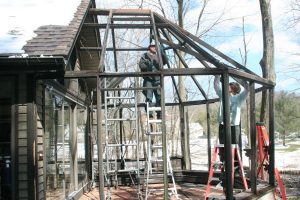People have different motivations for growing and caring for orchids. Some like to compete in prestigious contests. Others raise orchids for profit, and still others grow them in the hopes of creating a more beautiful flower via crossbreeding. Whatever the reasons, orchid enthusiasts can agree on common issues — like ensuring these blooms survive the winter.
We offer the following tips on how to help your precious orchids make it
through the colder time of year.
Ration Sunlight
As available sunlight becomes scarcer during the winter months, move your orchids to a sunnier spot. A good location to make the most of sunlight when days are shortest this season is at an east-west position. Add a grow light if the orchid is a type that needs a higher light intensity, such as the cattleya, dendrobium or vanda.
You can see if the amount of light is too much for the orchid by observing
the leaves; it’s too much light if they turn yellowish-green or red. If the
leaves turn dark green, it’s exposed to too little. Also, feel the leaves. If
they’re warmer to the touch than the ambient air, it’s overexposed to sunlight
and should be moved to a darker spot.
You can also control the amount of sunlight your orchids receive without
constantly moving them by using greenhouse window shades.
Using shades to limit or maximize sunlight exposure for your orchids can more easily
be done with the industry leading automated
versions we install.
Watch the Temperature
Common types of orchids require a temperature of between 55° and 80° F to thrive. Should the temperature average 60° to 65° F, you must resort to artificial means of raising the ambient temperature. Adjust the thermostat, or you can augment it with the use of cheaper portable heaters. Never expose the orchids to higher temperatures by placing them near fireplaces or heating vents. The heat needed by orchids must be humid, not dry.
Water them Right
Regardless of the weather or season, it’s common practice to water orchids
early in the day, so they dry out by evening. To prevent your orchids suffering
from cold burn, water your orchids less often in the winter. Your orchid
container’s size likewise dictates how often you need to water them. A 6-inch
pot requires water every seven days, while a 4-inch pot, five to six days.
The potting medium used by the orchid is also important; an orchid set on
bark needs more water than an orchid set in sphagnum moss. Note that bark tends
to dry out faster than sphagnum moss, but a bark-mounted orchid’s roots may be
sufficiently moist.
Poke the pot with your finger about an inch into the pot; if you feel
moisture, don’t add any more water. Your orchid’s potting medium should be
damp, not soggy, and never bone-dry.
As a rule of thumb, it’s better for orchids to be slightly under-watered in
winter as less water means less moisture in the plant cells, as excess moisture
could crystallize and kill the orchid.
Worst-Case Scenario
Should something go wrong and your orchid or orchids appear to have
perished, don’t assume they’re dead and send them to the compost heap– they
may have life left in them and can be revived.
When this happens, let the orchid medium dry, and keep it in a humid area (you can use humidifiers), away from direct heat and sunlight.
Don’t water the orchid and wait for new sprouts to grow. Once there are new
sprouts, water the orchid with plain water, then follow up with a small dose of
fertilizer and elements as new roots grow. You may even notice that this winter
shock your orchid experiences may trigger new buds and flowering.
Final thoughts
Ensuring your orchids survive the winter is a delicate balance. Apply the
right amount of water, light, and temperature. If the worst happens and it
appears that your orchid or orchids have died, don’t give up on them and treat
them as if they were newly re-potted.
Reduce the light exposure, apply some fertilizer and nutrients, space
watering by 10 to 12 days, and your orchid could come back from the brink and
make it through the winter.
And if you’d like to tilt the odds in favor of your orchids surviving the
cold, choose the more acclimated species like cymbidiums, masdevallias, miltonias,
odontoglossums, oncidiums, plain-leaved paphiopedilums or sophronitis orchids.
If you found this information on orchid care during winter interesting, we
have other resources you can
read.
We can assist you in every aspect of building a new luxury greenhouse that
suits your tastes and meets your particular needs and specifications. Our
mission is to ensure homeowners like you can enjoy the splendor of greenery
within or close to your home, year-round.
Should you desire a quote for building your own
conservatory today, you can contact us here.



 Summer is here!
Summer is here!